Science
Following Comet Y1 ATLAS: the 'Lost Comet' of Spring – Universe Today

Got clear skies? If you’re like us, you’ve been putting the recent pandemic-induced exile to productive use, and got out under the nighttime sky. And though 2020 has yet to offer up a good bright ‘Comet of the Century’ to keep us entertained, there have been a steady stream of good binocular comets for northern hemisphere viewers, including C/2017 T2 PanSTARRS and C/2019 Y4 ATLAS. This week, I’d like to turn your attention to another good binocular comet that is currently at its peak: the ‘other’ comet ATLAS, C/2019 Y1 ATLAS.
Discovered by the Asteroid Terrestrial-Last Alert System (ATLAS) based at two geographically separate sites on Haleakala and Mauna Loa, Hawaii on the night of December 16th, 2019, Y1 ATLAS was one of the final comet discoveries of 2019.
The comet is on a 3,500 year path around the Sun on a prograde orbit inclined 73 degrees relative to the ecliptic. When this comet last came through the inner solar system around the 25th century BC, the Great Cheops Pyramid of Giza was still fresh from the builders.
Unfortunately, cosmic bad luck sees Comet Y1 ATLAS visiting us at almost exactly the wrong time of year. Had Y1 Atlas crossed the ecliptic in October, it would have passed just 0.08 Astronomical Units (AU) or 7.4 million miles (12 million miles) from the Earth just exterior to our orbit, and would have put on a fine show. As is often the case with comets, six months earlier or later would’ve made a big difference.
As it stands, Comet Y1 ATLAS just passed perihelion at 0.861 AU (80 million miles/130 million kilometers) from the Sun on March 16th, and currently shines at magnitude +8 in the constellation of Andromeda. March through mid-April sees the comet holding steady about 10 degrees above the northwestern horizon at dusk for mid-northern latitude observers, until it vaults northward towards the north celestial pole, becoming a circumpolar object from late April through May. The comet follows the zero hour line in right ascension right through the end of Spring.
As of writing this, this apparition of the comet seems to be slightly over-performing by about half to a full magnitude or so.
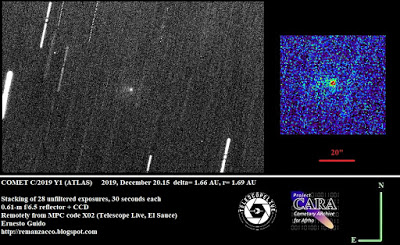

Let’s hope that this trend holds. There is also something else that’s very special about comet Y4 ATLAS: it’s similar orbit suggests that it is a fragment of C/1988 A1 Liller. This may have been the result of a cometary breakup long ago, as C/1996 Q1 Tabur and C/2015 F3 Swan all seem to belong to the same family of objects. This also suggests that Y1 ATLAS is dynamically new, and could produce an outburst of its own.
Here’s the blow-by-blow of celestial dates with destiny for comet Y1 ATLAS in the Spring of 2020:
(note: unless otherwise mentioned, “passes near” in the following text means less than one degree).
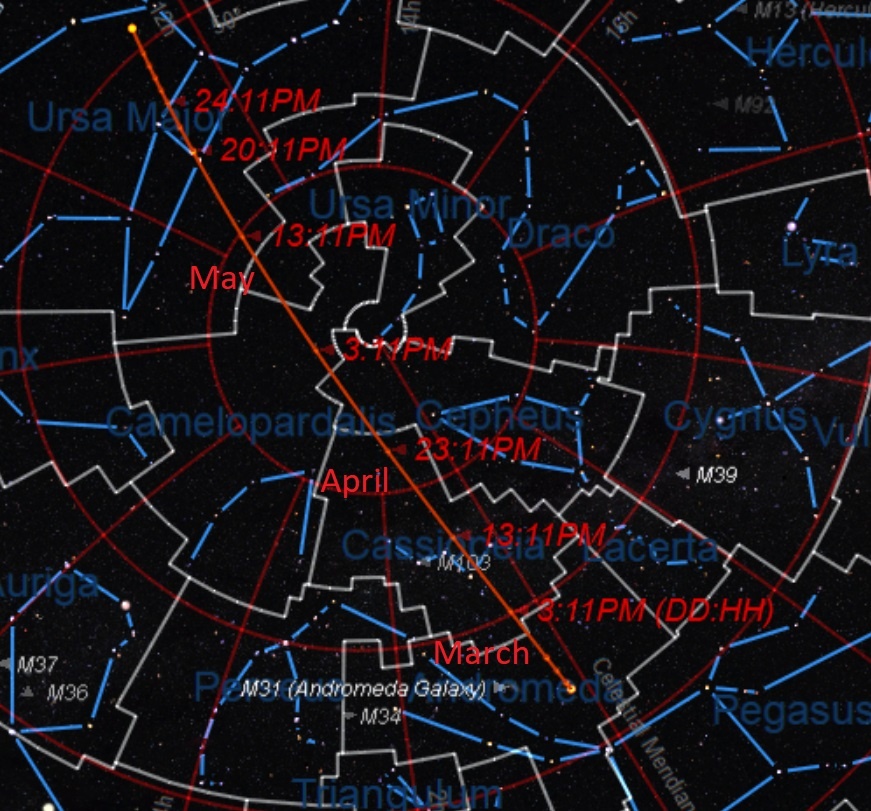

March
27-Photo op: the comet passes between NGC 7662 (the Blue Snowball planetary nebula, at 9 degrees distant), and M31 (the Andromeda Galaxy) at 5 degrees away.
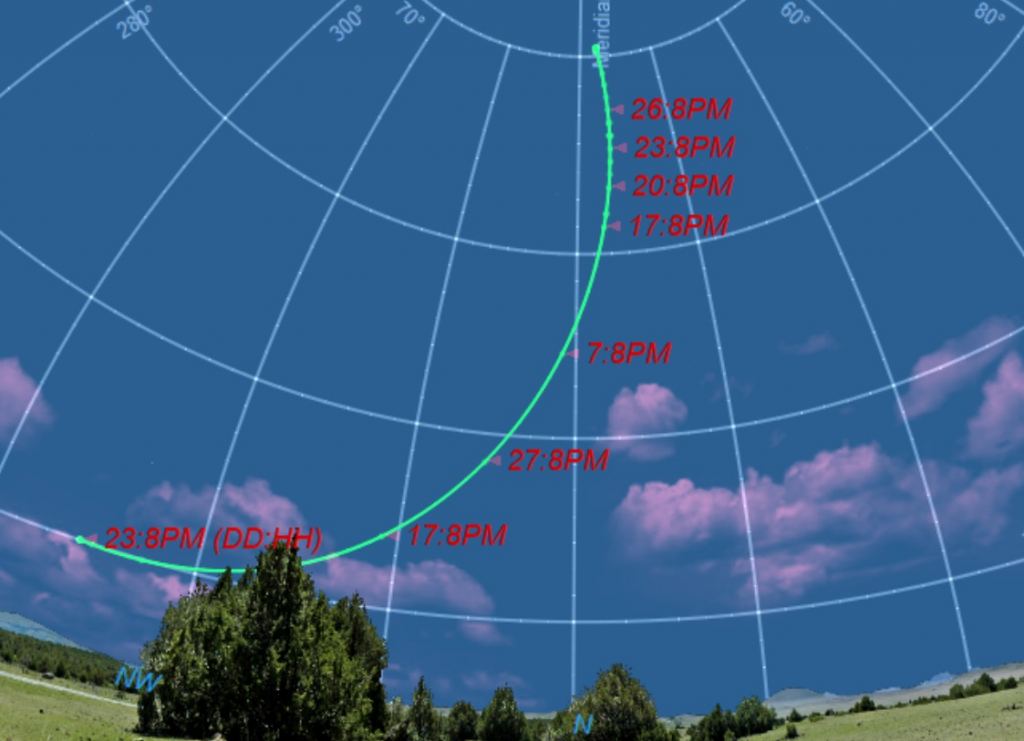

April
1-Crosses into the
constellation of Cassiopeia the Queen.
14-Crosses the
galactic equator northward.
26-Crosses into the constellation Cepheus the King.
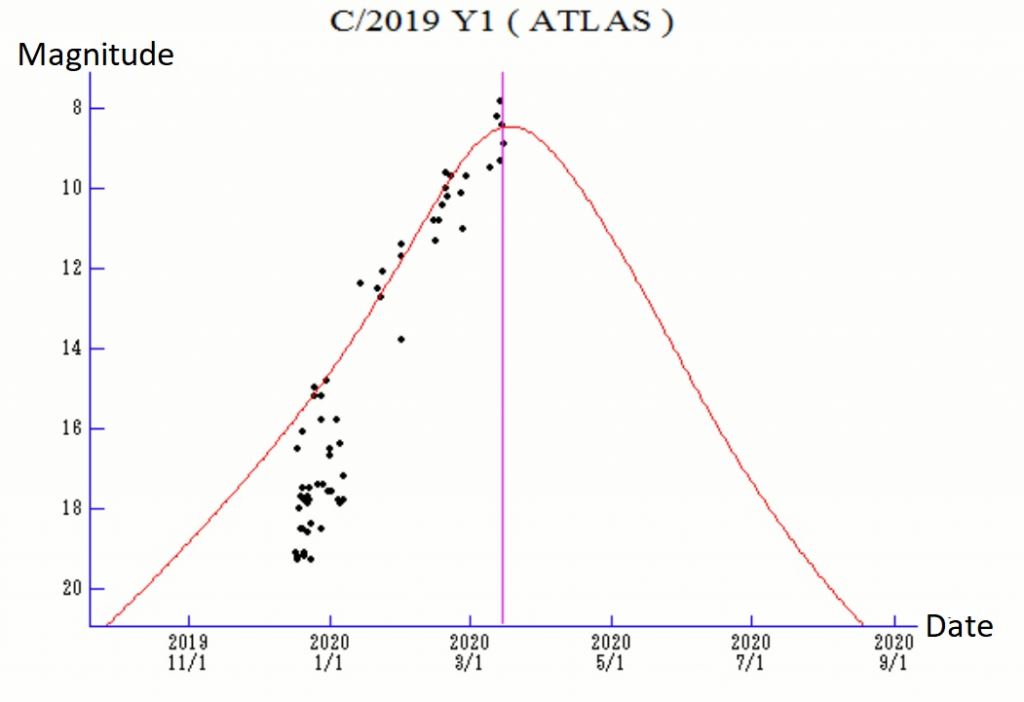

May
1-Photo-op: Y1 ATLAS groups with two other notable 2020 comets: T2 PanSTARRS (6 degrees distant) and Y4 ATLAS (20 degrees distant).
2-Crosses into Camelopardalis, and passes closest to the North Celestial Pole (NCP) at less than eight degrees.
3-Closest to the Earth at 1.17 AU distant.
9-Crosses into Draco.
13- Crosses into
Ursa Major, and passes 3 degrees from M81/M82.
20-Passes near Duhbe
(Alpha Ursae Majoris).
24-passes Owl Nebula Messier 97.
June
22-Passes into Coma Berenices.
29-Passes near the open cluster Melotte 111.
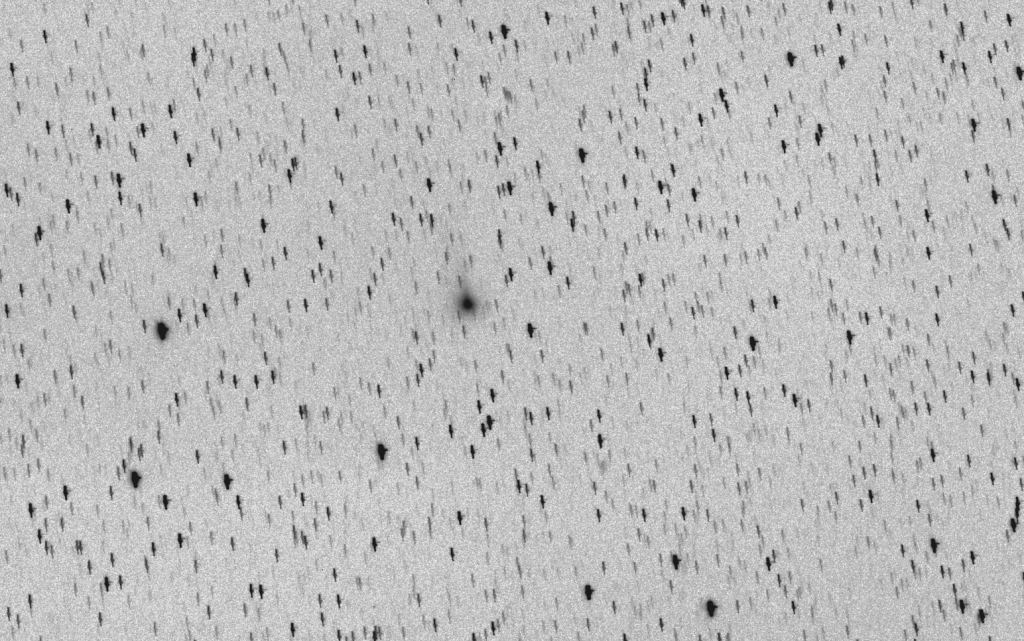

As we enter into July, Comet Y1 ATLAS should drop back below binocular visibility to the sub +10th magnitude range, not to visit the inner solar system again until sometime in the mid-7th millennium AD.
Observing comets with binoculars is as simple as sweeping the suspect field and looking for the fuzzy little ‘star’ that stubbornly refuses to snap into focus. Keep in mind, an +8th magnitude comet can appear visually fainter than an +8th magnitude star, as all those precious photons are ‘smeared’ out over the comet’s apparent surface area.
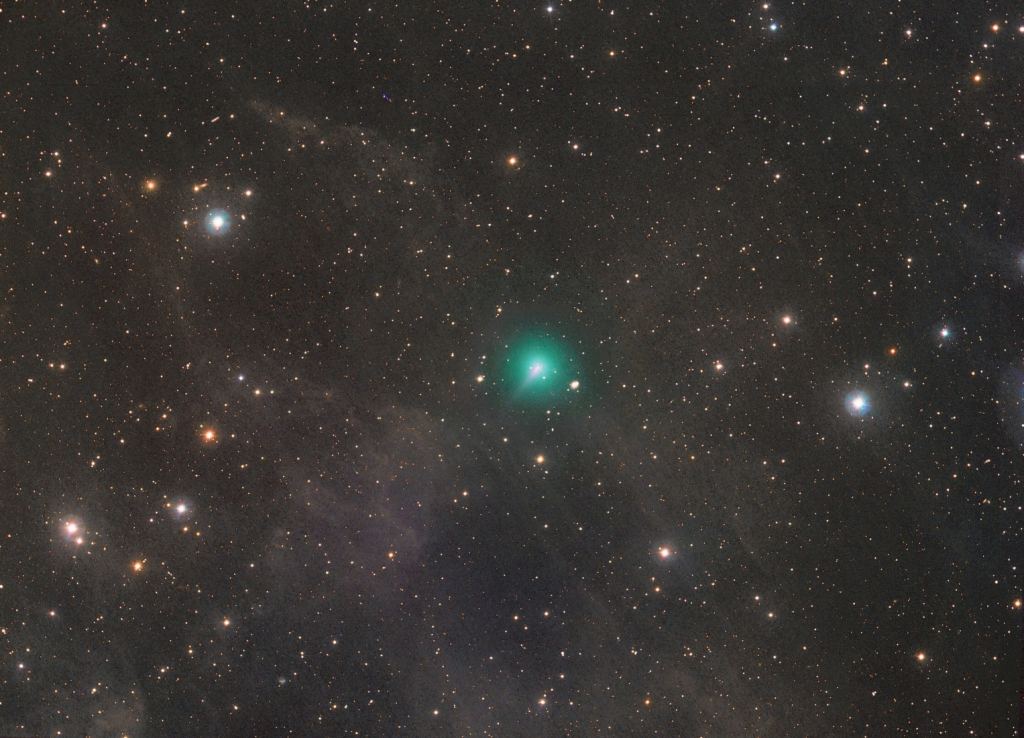

Also, we’ve been getting lots of queries on Comet C/2019 Y4 ATLAS as of late. Yes, there is mounting excitement as this over-performing comet heads towards perihelion in late May… already, the dusty coma of the comet is an amazing 720,000 kilometers (450,000 miles) across… and that’s while it’s still 1.6 AU from the Sun. Claims, however, that it will become “the brightest comet ever witnessed!” need to be met with extreme skepticism. Yes, it may reach 0 magnitude near perihelion on May 31st… but it will also appear 13 degrees from the Sun on that date, and get swamped in the Sun’s glare. The best bet is to nab the comet near dawn in early May, before it disappears from view for good.
Hopefully, tracking down these comets will pass the time in exile. We could really use a solar outburst, galactic supernovae courtesy of Betelgeuse, or great naked eye comet right about now… just nothing apocalyptic.
-Lead image of Comet C/2019 Y1 ATLAS courtesy of José J. Chambó/Slooh
Science
NASA hears from Voyager 1, the most distant spacecraft from Earth, after months of quiet
|
|
CAPE CANAVERAL, Fla. (AP) – NASA has finally heard back from Voyager 1 again in a way that makes sense.
The most distant spacecraft from Earth stopped sending back understandable data last November. Flight controllers traced the blank communication to a bad computer chip and rearranged the spacecraft’s coding to work around the trouble.
NASA’s Jet Propulsion Laboratory in Southern California declared success after receiving good engineering updates late last week. The team is still working to restore transmission of the science data.
It takes 22 1/2 hours to send a signal to Voyager 1, more than 15 billion miles (24 billion kilometers) away in interstellar space. The signal travel time is double that for a round trip.
Contact was never lost, rather it was like making a phone call where you can’t hear the person on the other end, a JPL spokeswoman said Tuesday.
Launched in 1977 to study Jupiter and Saturn, Voyager 1 has been exploring interstellar space – the space between star systems – since 2012. Its twin, Voyager 2, is 12.6 billion miles (20 billion kilometers) away and still working fine.





Science
SpaceX launches 23 Starlink satellites from Florida (photos)


|
|
SpaceX sent yet another batch of its Starlink internet satellites skyward today (April 23).
A Falcon 9 rocket topped with 23 Starlink spacecraft lifted off from Florida’s Cape Canaveral Space Force Station today at 6:17 p.m. EDT (2217 GMT).
The Falcon 9’s first stage came back to Earth for a vertical landing about 8.5 minutes after launch as planned. It touched down on the SpaceX droneship Just Read the Instructions, which was stationed in the Atlantic Ocean.
It was the ninth launch and landing for this particular booster, according to a SpaceX mission description. Five of its previous eight liftoffs were Starlink missions.
The Falcon 9’s upper stage will continue carrying the 23 Starlink satellites toward low Earth orbit (LEO) today, deploying them about 65 minutes after liftoff.
This evening’s launch was the 41st of the year for SpaceX, and the 28th of 2024 dedicated to building out the huge and ever-growing Starlink megaconstellation. There are nearly 5,800 operational Starlink satellites in LEO at the moment, according to astrophysicist and satellite tracker Jonathan McDowell.
The Starlink launch ended up being the first half of a spaceflight doubleheader: A Rocket Lab Electron vehicle launched two satellites, including a NASA solar-sailing technology demonstrator, from New Zealand today at 6:33 p.m. EDT (2233 GMT).
Editor’s note: This story was updated at 6:30 p.m. ET on April 23 with news of successful launch and first-stage landing.





Science
Exploring ecological networks in a digital world | News | Vancouver Island University | Canada – Vancouver Island University News


Getting to know Samantha Letourneau
By day, Samantha Letourneau is Vancouver Island University’s Canada Learning Bond project lead and Volunteer Tutor Coordinator. She’s also a musician and dancer and for the past two years, she’s been collaborating with Swedish artist Mårten Spångberg, thanks to funding obtained through Crimson Coast Dance, to create a digital art installation that goes live on Friday, April 26. A launch event takes place at Black Rabbit restaurant in the Old City Quarter that night. Samantha is also hosting a creative process workshop on April 27 and 28.
Can you share a bit about your background as an artist and how you got into it?
I have been working in art for a very long time, as a musician and dancer as well as an art administrator and program coordinator. I started music at the age of 11 and dance came later in my life in my early 20s. I always wanted to do dance, but I grew up in a small community in Yellowknife and at that time the only dance classes available were highland dancing, which I was not very interested in.
In my early 20s while living in Vancouver, I took classes in contemporary dance and was fortunate to land a small part in the Karen Jameison Dance company for a piece called The River. The River was about rivers and connection between the reality of a real and physical outdoor river and the different reality of “the river within.” It was both a piece of art and outreach for the community. It included working with the S’pak’wus Slu’lum Dancers of the Squamish Nation. Somewhat ground-breaking for 1998.
From there I was hooked and wanted to do more in dance. I studied a lot and took many classes. Fast forward to now, I have been involved with productions and performances with Crimson Coast Dance for more than 15 years and greatly appreciate the talent and innovation that Artistic Director Holly Bright has brought to this community. She is amazing and very supportive of artists in Nanaimo.
How did this international exchange come about?
The Nordic/Nanaimo exchange is one of the innovative projects Holly created. At the height of the pandemic, funded by BC Arts Council and Made In BC, Crimson Coast Dance embarked on a project that explored the ways in which Nanaimo artists could participate in online exchanges.
Two artists in Nanaimo – myself and Genevieve Johnson – were introduced to artists from Europe and supported through this international exchange. My collaborator, Mårten Spångberg, is a Swedish artist living and working in Berlin. An extension of that exchange is funded by Canada Council for the Arts – Digital Now.
What brought Mårten and myself together – and I quote Mårten here – is “questions around climate change, ecology and the influence contemporary society has on its environments. We are not interested in making art about the ecological crises or informing our audience about the urgency that climate change implies, but instead through our research develop work that in itself proposes, practices and engages in alternative ecologies.”
We share an understanding that art is a unique place, in the sense of practice, activation, performance and event, through which alternative ecologies can emerge and be probed and analyzed.
Tell us about the launch event.
We are launching the digital art installation that Mårten and I created on April 26 at The Attic at Black Rabbit Restaurant. The event is free to attend but people must sign up as seating is limited. I produced video art with soundscapes that I recorded mixing field recordings with voice and instrumentation. Marten explores text, imagery and AI.
My focus is on the evolving and ongoing process of how we communicate with each other and to nature within a digital context.
During our collaboration, Mårten and I talked about networks, though not just the expansive digital network of the internet but of nature. We shared thoughts on mycelium, a network of fungal threads or hyphae, that lately has received much attention on the importance of its function for the environment, including human beings.
Building off this concept, ideas of digital and ecological landscapes being connected emerged. From this we worked both collaboratively and individually to produce material for this digital project. Mårten will be there via Zoom as well and we will talk about this two-year process and the work we created together.
-



 Health9 hours ago
Health9 hours agoRemnants of bird flu virus found in pasteurized milk, FDA says
-
Art15 hours ago
Mayor's youth advisory council seeks submissions for art gala – SooToday
-



 Science22 hours ago
Science22 hours ago"Hi, It's Me": NASA's Voyager 1 Phones Home From 15 Billion Miles Away – NDTV
-



 Health13 hours ago
Health13 hours agoBird flu virus found in grocery milk as officials say supply still safe
-
News21 hours ago
Some Canadians will be digging out of 25+ cm of snow by Friday – The Weather Network
-
Media20 hours ago
Jon Stewart Slams the Media for Coverage of Trump Trial – The New York Times
-



 Investment13 hours ago
Investment13 hours agoTaxes should not wag the tail of the investment dog, but that’s what Trudeau wants
-



 Sports24 hours ago
Sports24 hours agoAuston Matthews turns it up with three-point night as Maple Leafs slay Bruins in Game 2 – Toronto Sun



